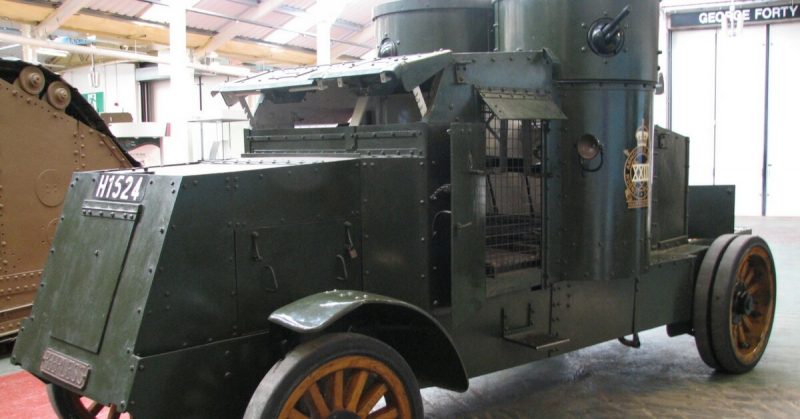In 1919 the British Army found itself short of armoured cars when many were needed quickly to police various trouble spots around the world. Few manufacturers wanted to do war work at the time, but the Austin Motor Company of Birmingham agreed to provide armoured bodies if the War Office could come up with suitable chassis.
Austin had made armoured cars during the war, mostly for the Imperial Russian Government which favoured a twin-turret design. Some of these cars later served with the Tank Corps. The best chassis that the War Office could come up with was the Peerless, of which stocks were available. The Peerless was a robust, chain-driven chassis manufactured in Cleveland, Ohio which had been used in large numbers as lorries by the British Army during the war. In fact, the chassis was too long for the Austin body, leaving a good deal sticking out at the back.
In reality, it did not make a very good armoured car. It was too big, too unwieldy and slow while the crew got a rough ride on solid tyres. However, it was durable and quite a few were still in service when the Second World War began. Peerless armoured cars saw service in Ireland, as food convoy escorts in London during the General Strike and with Royal Tank Corps Territorial Armoured Car Companies.
During painting in 1984 number 5035-CF was found below radiator flap and 31 on the offside door.
Vehicle chassis is the standard 2.5 ton Peerless TC4 chassis and the armoured body an Austin design of 1918. The drive to the rear wheels is by sprocket and chain. It was the first car to have controls duplicated at the back to allow the vehicle to reverse easily in an emergency. Used in the Irish Civil War, seven of them were handed over to the National Army after the Treaty of 1921. These remained in service until 1934. After this, the armoured bodies and guns were utilized on locally produced AFVs.
A message from the Tank Museum:
“Please Support Us: As a charity, we rely on public support for all our activities. Our work is funded entirely by people like you. With your support, we can continue to create content. With the right support we might be able to do it more regularly – and can be even more ambitious. Please Click on the Banner Below”
 Photo credit"
title="Peerless Armoured car, at Bovington Tank Museum, UK.
Photo credit"
title="Peerless Armoured car, at Bovington Tank Museum, UK. 